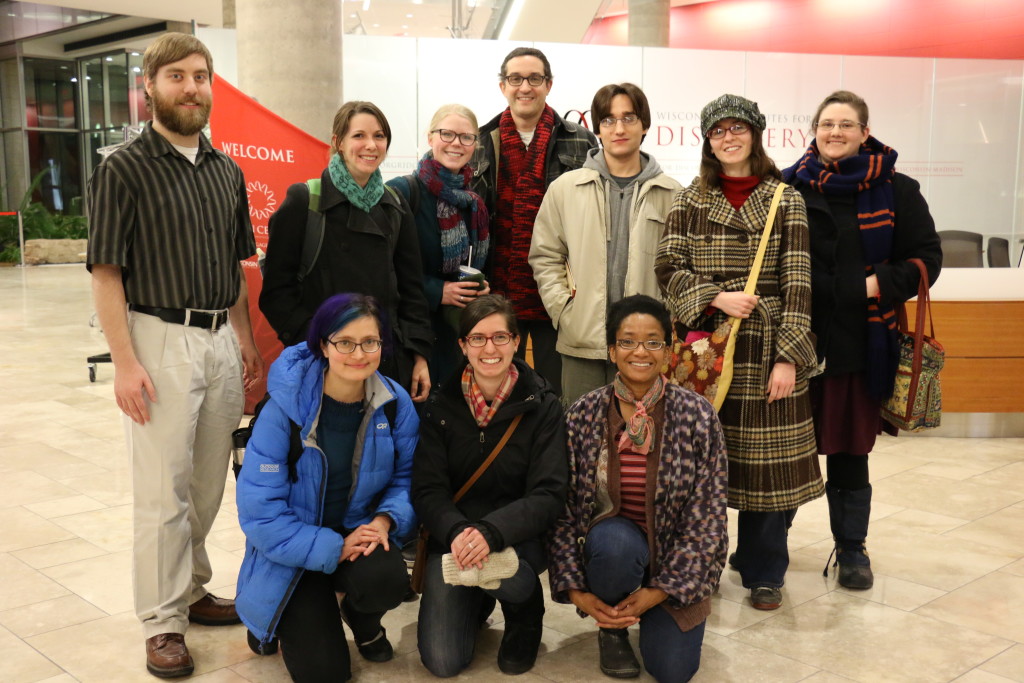According to the UNESCO Interactive Atlas of the World’s Languages in Danger, 11 languages in the U.S. are vulnerable; 25 are definitely endangered; 35 are severely endangered, including Ho-Chunk (Winnebago) here in Wisconsin; 74 are critically endangered, including Oneida, Menominee, and Potawatomi here in Wisconsin; and 54 are “extinct.”
The week of February 4, we talked about language in the TLAM 2016 class.
I confess I think in terms of linguistic practicalities. I’m thinking, What family does a language belong to? What is its grammar and syntax, how are sentences formed? What is its morphology, how are the words themselves formed? Is it vastly phonetically dissimilar to the Romantic and Germanic languages most people encounter during their high school and/or undergraduate foreign language educations?
In class, though, Omar described a language whose speaker always knows which direction is north. I was dazzled by the mind-expanding implications. The linguist Guy Deutscher discusses how language shapes its speakers worldview and consciousness at length in a New York Times article from 2010.

The next day February 5 was the UW-Madison’s American Indian Studies program’s 19th annual Evening of Storytelling. Almost everyone from class was in attendance. We had the honor of hearing Mary Louise Defender Wilson, a Dakota/Hidatsa elder and storyteller, and Joey Awonohopay, a member of the Menominee Tribe of Wisconsin, telling stories in indigenous language. (Translation followed in English.)
I shouldn’t have been surprised that stories play a tremendous role in indigenous language, transmission of culture, and even ways of knowing. But because my own first language (English) is hardly what I would consider highly supportive to storytelling, the implications of the centrality of storytelling to a language (and even way of being) is something I’m only beginning to understand.
When Omar mentioned the WPA-era interviews of Oneida Tribe members, I was intrigued. Sure enough, UW-Madison’s digital collections houses The Wisconsin Oneida Language Preservation Project, which includes language curricula, audio recordings, songs, and stories.
How can librarians-archivists-museum workers (who don’t happen to be linguistic specialists) help? Here is my own specific self-serving plug: Is there a way indigenous languages could benefit from community hackathons? What would such a hackathon do? If you have ideas, please share them in the comments!
-Courtney Becks
